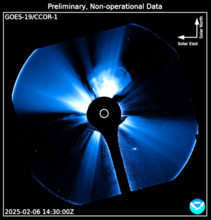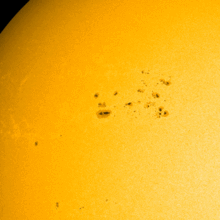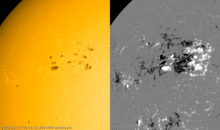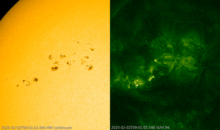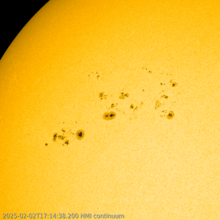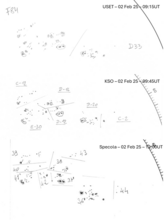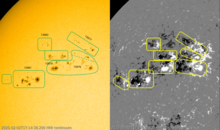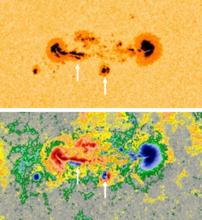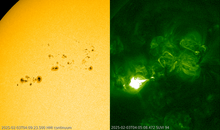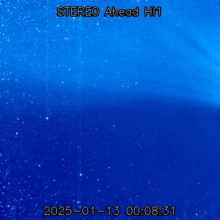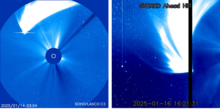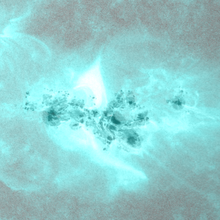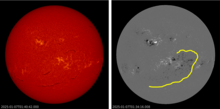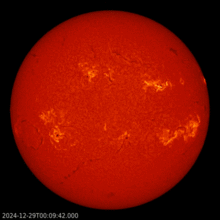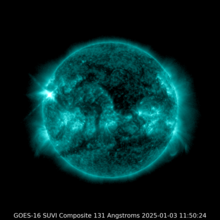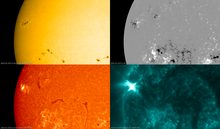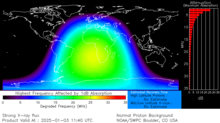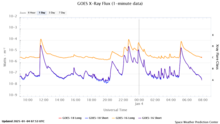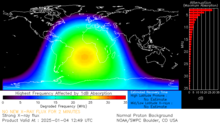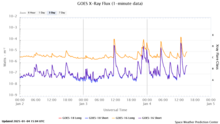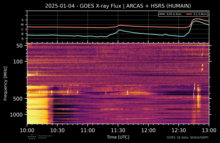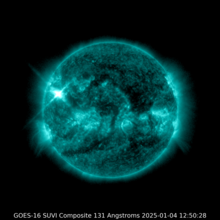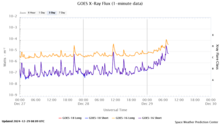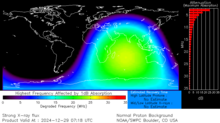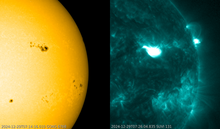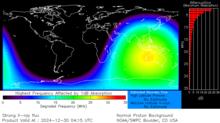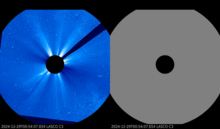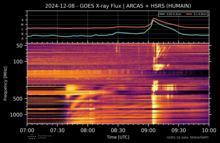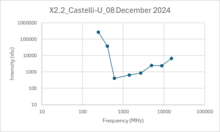news
Submitted on 2025-02-10
Preliminary, non-operational images of the GOES-19 coronagraph CCOR-1 are available at the NOAA/SWPC's testbed, in anticipation of GOES-19 becoming fully operational on 4 April.
Submitted on 2025-02-03
From 28 January onwards, a cluster of sunspots started to rotate over the northeast solar limb. It was responsible for several medium-sized solar flares.
Submitted on 2025-01-27
JSWSC has extended the deadline for submissions to the Topical Issue on Swarm's 10-year anniversary to 15 April 2025.
Submitted on 2025-01-20
Comet ATLAS made an impressive appearance in the imagery by STEREO-A and SOHO during the third week of January 2025.
Submitted on 2025-01-20
JSWSC has extended the deadline for submissions to the Topical Issue on the May 2024 space weather events to 30 April 2025.
Submitted on 2025-01-13
A million km long filament has been transiting the solar disk during the last 2 weeks.
Submitted on 2025-01-03
NOAA 3947 has been the source of several X- and M-class flares over the last 48 hours. ***Updated (2)***
Submitted on 2024-12-29
Coronal mass ejections, associated with a series of M- and X-class flares on 29 and 30 December, have resulted in a severe geomagnetic storm. ***UPDATED (4)***
Submitted on 2024-12-09
An X2 flare was associated with a particular feature at radio frequencies.
Submitted on 2024-12-05
NL - FR
“Signal received” After a smooth launch that was postponed by one day, operators and scientists waited to receive a first sign of life from the Proba-3 satellites.
Pages
Zircon - This is a contributing Drupal Theme
Design by
WeebPal.

